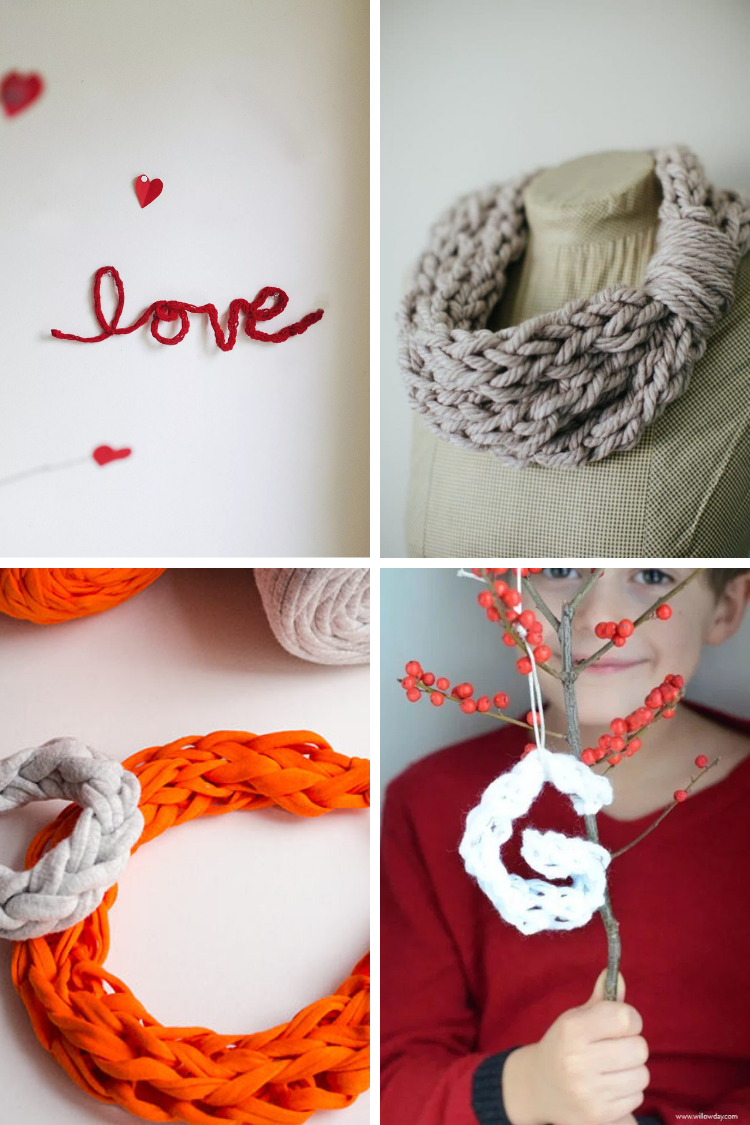
If you are going to learn to knit, you'll want patterns that are straightforward. It is possible to start by knitting a simple pattern like the corner-tocorner square. Once you know your knitting basics, you can start to branch out into more complicated patterns, such as colorwork. Luckily, there are many patterns available for beginners.
Beginner knitting patterns
Beginning knitter may find beginner patterns very useful. They can help knitters understand the pattern as well as how to correct mistakes. For beginners, a dishcloth can be a good starting point. This will give you an understanding of how to increase and decrease.
For beginners, simple knit patterns can be a great way to create beautiful pieces. Talland Tee for example is a quick and simple knit with unique lacy elements. It's made from a lightweight linen-wool blend yarn that can be worn all year. A simple knit project that is easy to make is the Child's Cat Hat. This simple pattern uses stockinette stitch on 3 double-pointed needles. It has an easy embroidered face.

Worsted weight yarn
You can start knitting with stedt weight yarn if you are a beginner. The versatility of this yarn gives you the same warmth as worsted but without the bulk. It's easy to use, quick to progress with, and it is very versatile.
These yarns can be used to create many beautiful patterns. Here are some examples. The striped garter stitch squares sweater by Amy King of Knitty is a great one for leftover yarn. This top with sleeves is made from 5 different colors. It's perfect for stash busting.
Corner-toss square
There are many methods to knit a corner square. These projects are also commonly known as knitting on the bias, which means that the stitching is not straight. This creates a project which drapes and stretches better than regular knitting.
Cast on stitches for one side. The right-hand side of the square should be facing. Next, you will continue to knit the whole way. A stitch marker can be used to determine which side is right.

Colorwork
If you want to make a colorful sweater, you can start with a beginner knitting pattern. It is a good idea to practice before starting a more difficult pattern. Begin knitting a sweater with two colors. This pattern is great for cold winter days when you need something warm.
For colorwork, the most basic knitting technique is to hold one strand in each of your hands. This is sometimes called "Scandinavian" knitting. Elizabeth Zimmerman has endorsed this method. This technique helps to prevent yarn balls and strands tangling.
FAQ
How do I find a hobby that interests me?
At first, it may seem like there is nothing you can do.
You might think, "I'm not very talented," "I struggle at sports," "I don't really know anything."
You probably have plenty of experience and knowledge to use when you are looking for hobbies.
It's not that you don’t realize it yet.
Take a good look at what you have in your house. How many things do you own?
Do you still have toys?
Maybe you have a collection of books or magazines.
Maybe you've always wanted to learn how to cook.
Or maybe you'd really like to start playing guitar again.
Whatever it is you're interested in, you can make it a hobby.
The secret is to remember that you already have plenty to draw on.
Once you have done that, you will be able choose a hobby that suits your lifestyle.
What are some hobbies that would suit introverts?
Introverts can concentrate on one thing at the same time. They prefer solitude, such as reading, writing music, or watching movies.
They also enjoy spending quiet time alone. They do not like to socialize all day. In fact, they can often be bored when surrounded with people.
This is why introverts choose hobbies that make them feel alone. You might find them reading books, listening, playing music, taking photos, writing poetry or painting.
Some introverts will even live alone. They can concentrate on their hobby without being distracted.
How can I get started in my new hobby?
It is important to choose the type of hobby you want to start.
After you've decided on your subject, it is important to feel passionate about it.
It is crucial to know why you want to pursue a hobby. It will provide you with direction and purpose.
Once you've chosen the hobby you would like to pursue you can start planning.
Think about what equipment you'll need to purchase.
Consider whether you need to attend classes or seminars.
You must ensure you have enough room for your hobby.
You may also consider joining a club or group. These groups often offer advice and support.
The last thing you should do is think about how much money it would cost to pursue your hobby.
What are some hobbies that you like?
Hobby Ideas for those who love to teach and learn.
Hobbies are great ways to spend time doing what you enjoy while learning something new at the same time.
Although there are many hobbies to choose from, they all share some common characteristics. They're often fun and easy to do.
They also tend to involve working with others, whether teaching someone how to play an instrument or helping them build a model airplane.
While you may not see yourself as a teacher at first, chances are that there is something you could do for someone else.
If you're looking for more creativity in your life, think about starting a hobby so you can share your talents with others.
What does a hobby cost?
Hobby costs nothing except time. But it could take years to achieve what you want if you are serious about it.
But there is one thing you can do to help yourself. It's called 'passion.' If you have passion for whatever it is you do, you will find it easier to put in the hours required to make progress.
It is possible to become addicted once you begin putting in the work. This is where the real fun begins. Because you now enjoy what you do and are improving your skills every day. By the end of the year you'll have probably made a lot of progress.
Don't fret about how long this takes. Give it a shot. You may be surprised.
Statistics
- The intensity of the dialogue partners' bond at the end of the forty-five-minute vulnerability interaction was rated as closer than the closest relationship in the lives of 30 percent of similar students. (time.com)
- Much of this decline reflects the fact that teens are less likely to work today than in the past; among employed teens, the amount of time spent working is not much different now than it was around 2005. (pewresearch.org)
- I am 100% biologically a woman (discover.hubpages.com)
- Almost 80% of people claim to have no hobby. (hobbylark.com)
- In comparison, men in the “no humor” condition were refused 84.6% of the time and were only accepted 15.4% of the time. (time.com)
External Links
How To
How to learn a musical Instrument
There are many methods to learn music. You could attend a school, read a book, get lessons from someone who plays a musical instrument, or look at videos online. Here are some tips and techniques to help you learn if your goal is to create your own learning path.
-
Find something you are interested in. If you don’t enjoy any of the instruments that you see, you might consider trying another one. It's difficult to take up a hobby if you don’t love playing the instrument.
-
Be patient. Learning anything new takes some time. Do not expect to be able to master every aspect of the subject immediately. Instead, you should continue practicing every day.
-
Make sure you practice regularly. This can be done even when you are tired. This will help you remember what you've learned.
-
You should choose a comfortable place to practice. A quiet room where you won't disturb anyone else is ideal. It is important to keep the room clear of distractions. Also, don't let loud music play near your home.
-
Have fun. Music is meant to be enjoyed. You should have fun practicing music. It will make you more motivated to keep going.
-
Set goals. Setting goals will help you to know exactly what your goal is. You will never be ashamed to fail.
-
Keep track of your progress. Notate all of your achievements and failures. It will help you become a better person over time.
-
Take breaks. Sometimes it is enough to just stop and think. It is a good idea to take breaks so you can think about everything.
-
Ask questions. Ask for help if you are unsure or have questions about certain aspects of the instrument. They may be able help you.
-
Listening can teach you a lot. Many musicians love to listen to and imitate songs. This helps them understand basic concepts behind the song.
-
Read books. Reading books will teach you more than watching videos or taking classes. Books often contain information you can't find elsewhere.
-
Join a band. You'll be more motivated to practice when you are playing with others. Plus, you'll meet people with the same interests as you.
-
Watch tutorials. Tutorials are short videos that explain various topics in great detail. These tutorials usually concentrate on one particular aspect of an instrument. Tutorials can be helpful in understanding difficult parts of an instrument.
-
Explore different learning methods. Some people prefer to learn through lectures, whereas others learn better by reading. You can experiment until you discover what works for you.
-
Practice makes perfect. There is no way to be an expert overnight. Instead, it takes time and effort to become proficient enough for you to succeed.
-
You can learn from other musicians. Listening to other people play their favorite songs can help you learn faster.